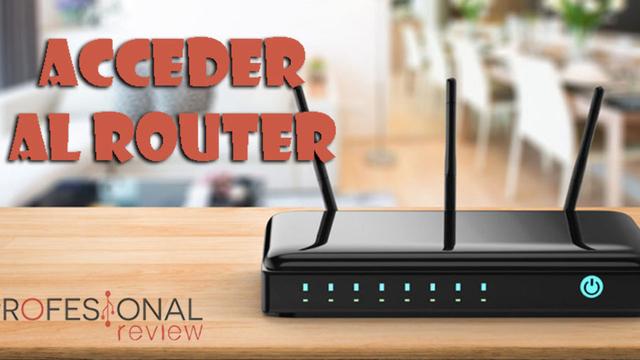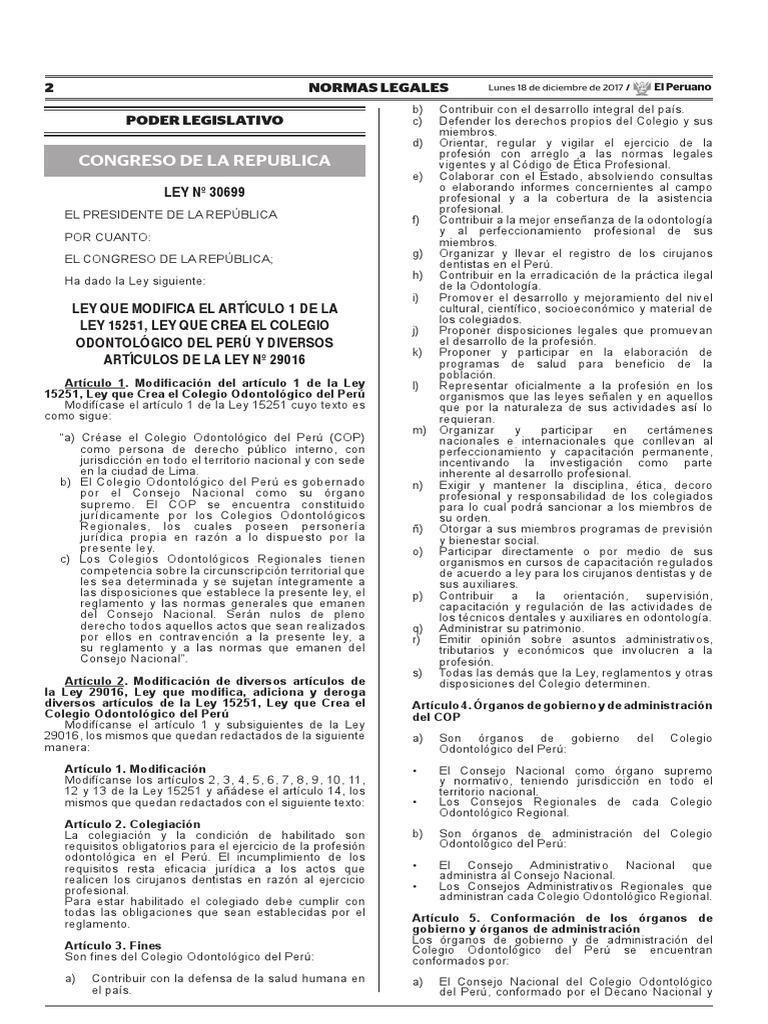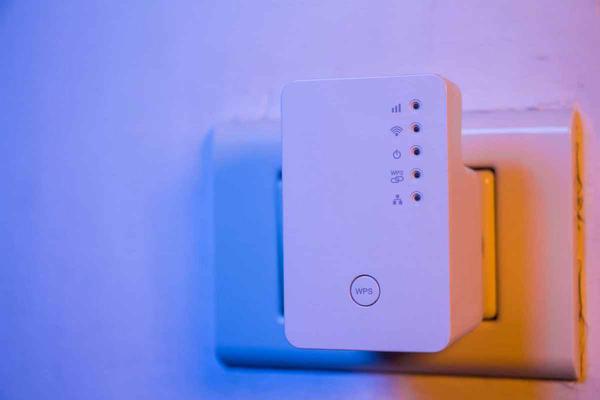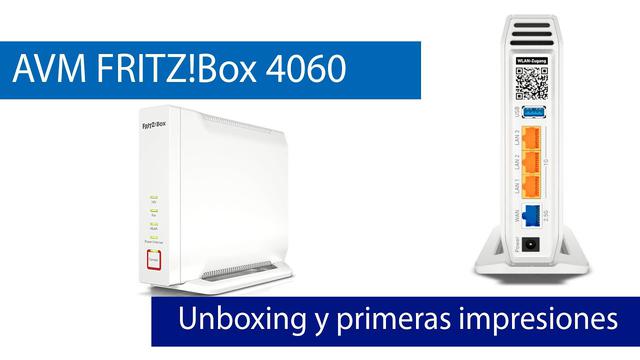How to access your home router – Any model
There is a large number of users who have never tried to access the router they have at home and who is responsible for providing the network connection. While it is true that many are not even interested in computing, a router is a device that we should know, and above all configure the password and access user as well as the password and the Wi-Fi network.
Index of contents
You never know who will try to steal the Internet from outside or a neighbor, once connected to the network they could even access our router without us realizing it and do a pretty important job for us. And it is that many factory routers have a simple access of admin / admin as username / password
What we can (and should) do inside a router
In case you do not know, the router is the device or device that is responsible for providing us with the connection and access to the Internet. This allows us to connect our computers, mobile phones or Tablets to the Internet via Wi-Fi or via a wired connection. There are ADSL routers, fiber optic routers and even 4G routers that use the mobile data network.
In all of them, without exception, we can enter with the steps that we will see later. But the most important thing is to know what we can do inside a router, since as if it were a computer, it has firmware inside that allows us to access and modify internal parameters of the network itself thanks to a graphical interface from our Internet navigator.
This is what we can do inside it:
Access the router step by step
We are going to focus this tutorial so that it is valid for any router regardless of its manufacturer, whether we have bought it ourselves or whether it has been delivered by our Internet provider. Absolutely all of them work in the same way except for very specific cases such as.
Previous requirements
We can consider some prerequisites before trying to access the router, some obvious and some not so obvious.
Be connected to our LAN
The first is to be connected with our computer, smartphone, tablet or whatever to the router. How? Well, through an Ethernet cable or simply with the Wi-Fi connection.
This is quite logical, since the access will be via IP from the internal network. We will not be able to do it connected to the 4G of our mobile or via bluetooth, although some offer this possibility only for a first configuration of the network.
Many routers allow their management remotely or through VPN, but it would be necessary to open ports or for the equipment to be equipped with VPN services, and this is only available in routers purchased by ourselves, which is not usual.
Do you have an app?
On other occasions, the routers themselves include an application for Android or iOS that will allow us access from our smartphone without needing to know the IP address, this is common in mesh network systems where we have several routers and points of WiFi access. We will also consider these options.
In this case, we recommend taking a look at the router instructions to see if we have such an application in the store, as it is always free and very useful to have.
we need a browser

This is also quite logical, since the router interface will be available from a web browser. In principle, any version is valid, and on any operating system.
Access the router from a computer
We are going to see in this first case how to access the router through a computer with Windows 10, or any other version, which will be the most common.
First step: identify the access IP
This will be the step that every user must do to access the router, since it is the same in all of them and it works in 99% of cases.
The IP address is a unique and unrepeatable identifier with which a device connects to a network to exchange data. Our computer has an IP, our mobile another and also the router has its own that will be called Default Gateway in Windows.
When we access a web page, behind the behind there is always an IP address, only this is public and not private as it is ours. We a priori cannot see our public IP, with which we access the Internet, but we can see the private IP, which is given to us by the router itself. To know the IP of the router there are two ways to do it, so let's see them.
With Command Prompt (faster)
The first method to access the router is through the system command console. We only have to go to the start menu, open it and write "CMD" or Command Prompt.
In the search result, the Command Prompt will appear precisely, with the icon of a black window. Press Enter or click on said result to open it.
Once inside, we will have a black window with a line waiting for us to write something. The command we will use will be:
ipconfig
And then press Enter to execute it.
The IP address will be a numerical code with 4 figures separated by dots. It will be divided into sections and we will look for the one with 5 subsections. The most normal thing will be to find it with the title "Wireless LAN Adapter" if we are connected by Wi-Fi or in "Ethernet Adapter" if we are connected by cable. In our case it will be by Wi-Fi.
Here we must look for the line “Default gateway”, which will be the last. This will be the address that interests us, since it is the access to the router. "IPv4 address" is the IP of our computer for your information.
From the network box (folder explorer)
In the second method we are enough of our file explorer. We will open any window and go to the “Network” icon that is in the column that shows the directory tree on the left, just below the whole.
We will press to enter. If we have never accessed this section, a message will appear indicating that we do not have network detection activated. This option activates the possibility of seeing other computers on our internal network and the router, which is what interests us.
Click on "Accept" and then on the text balloon that is under the address bar of the browser. We choose the first option “Turn on network detection …”.
Then a new window will appear with two options. It is advisable to choose the first option, since if we are connected by public Wi-Fi, it will prevent other users from seeing our computer from the network.
A private network is our own LAN, while a Public network would be the default Wi-Fi in Windows, since, for example, in a bar with free access, we do not know the identity of those who are connected.
Now we can see all the devices on the network in this window, as long as they are visible as we just did ours. The router will be the one that appears in the “Network infrastructure” section with the icon of a router and normally its model.
We only have to click on it as if it were a folder to access its welcome screen.
Second step: access from the browser
Following the previous order, at this point we should already have the IP address of our router, so all that remains is to open the browser and write it.
After doing this, we press Enter and the access screen will appear before us.
If we have chosen the second option, we only have to double click on the router icon to obtain exactly the same access screen.
Third step: put the access credentials
But of course, there is still one more choice before accessing our router, which is to know what our username and password will be. Again we have two or three options available to know this:
Look at instructions or label of the router
In the routers purchased by us, we will find the access data on a label under the router, along with the Wi-Fi SSID and its password.
It could also be in the initial setup instructions.
Try standard combinations
If, on the other hand, it is a router supplied by the Internet company, then it is possible that it is one of the typical username/password combinations:
Contact our company's support center
Another option will be to call our provider's toll-free support number and have them give us the access credentials.
Access the router from my Smartphone
Now we are going to access our router from our smartphone, but without any help from our computer, which is really the grace of this section.
Also here we will have two options available, either through the IP address of the router, or with an application available from the router manufacturer.
Direct access with IP
We already know that we are going to need a browser to enter the IP address, but here the most important thing will be the way in which we will obtain it without the help of a PC. We will do the example with an Android terminal.
Among the many applications that we have on Google Play, we will also find some to show the information of our internal network. We have used an IPConfig call.
It is so simple, that we only have to open it to see the information we need. In this case, it comes in English, so the section that interests us will be the “Gateway”, although we have this same information in the “DNS” line, and “DHCP Server” since, in short, they are functions that our own router does.
From here it will be the same as on PC, write the IP in the browser and access normally.
App access (if you have one)
Today it is rare to find a device whose manufacturer does not have its own App. In our case we use an Asus router and fortunately we have an application on Google Play to access it. We imagine that all or most of them will also be on iOS.
So we just have to search for it, install it and take the steps that the configuration wizard shows us in each case. There is no fixed method, each App will have its own, everything is based on reading and doing what it tells us. We leave you with the App of the main manufacturers:
How to access a Wi-Fi access point or Mesh Systems
Finally, we consider it interesting to make a small section to see how to access Wi-Fi access points or Mesh or mesh routing systems, that is, those that have a set of routers (two or three) that are installed throughout the house. .
The procedure changes a bit in the case of the Wi-Fi access point, since its IP address almost always remains hidden as it is a mere gateway to the main router, so a priori we do not have access.
What can we do then? Well, exactly the same as in the previous section, take our Smartphone and install the application provided by the manufacturer. Of course, not all access points have manageable firmware, but most do.
We have carried out the example with a TP-Link access point, which through the Tether application we can connect with it and manage basic aspects of the Wi-Fi connection.
In Mesh systems it is more of the same, in some cases we can directly access the router considered main, as in the case of Asus. While in others like TP-Link or NETGEAR we will use the TP-Link Deco application for the first case or NEGEAR ORBI for the second.
Conclusions and remote access
As we can see, accessing the router is quite simple and also a generic process for most devices, both from a smartphone and from our computer, this being the most common way.
Most manufacturers offer us simple and very complete applications to improve access to devices, especially those that we buy independently of the router that the Internet provider gives us.
We still have one more possibility, which is remote router management, that is, not needing to be connected to our internal network and therefore manage it from anywhere in the world. But we do not recommend doing this for users with little knowledge, since it involves opening ports and thereby creating a vulnerability to attack by hackers.
Without further ado, we leave you with some network tutorials in case you want to know more about this world:
How did you access your router? We hope that with this tutorial we have covered all possible ways and it has worked for you. If you have any problem, leave it to us in the comments.








